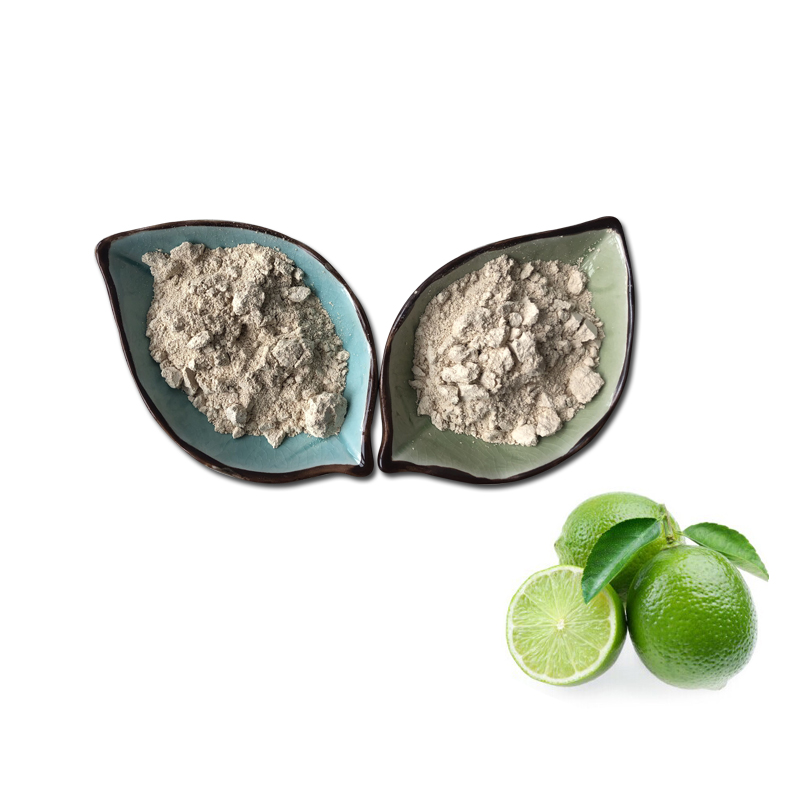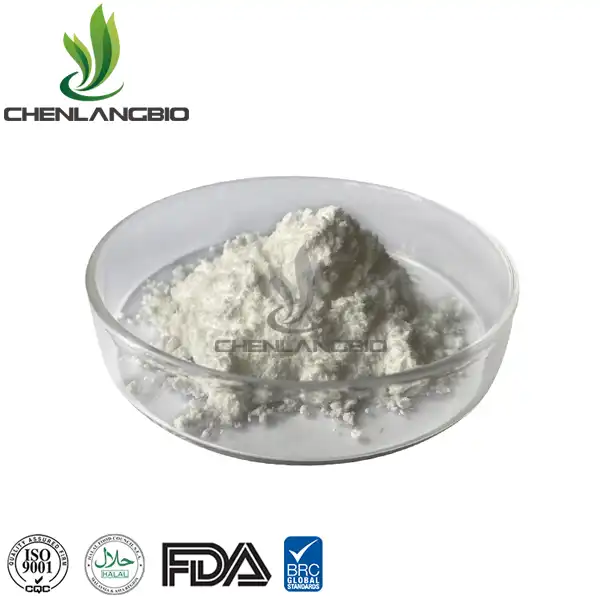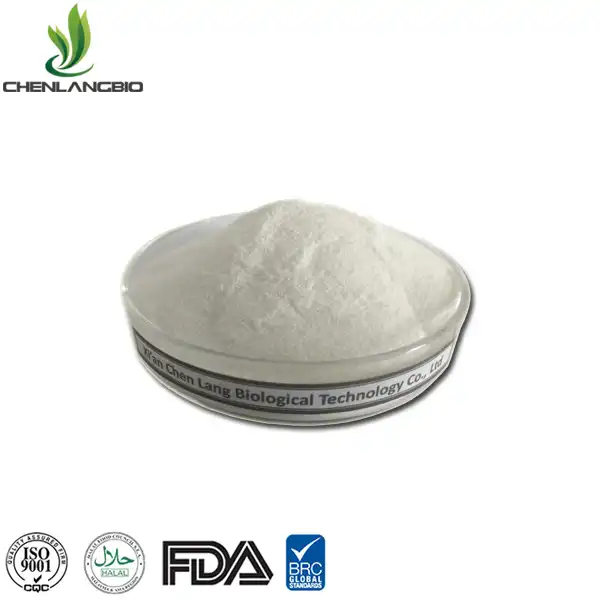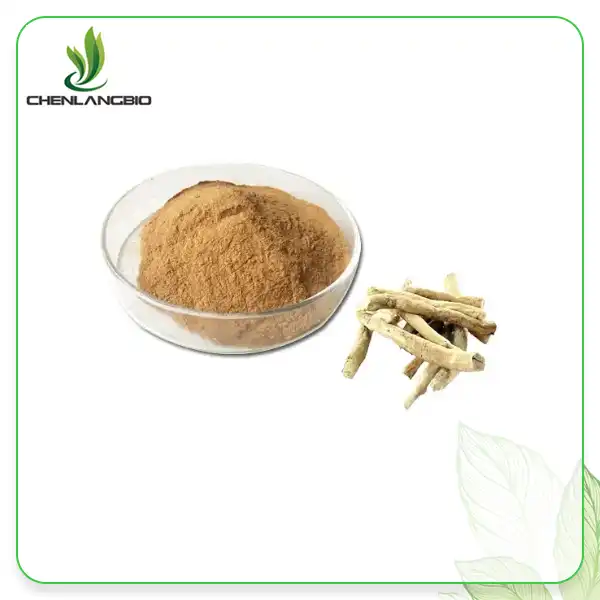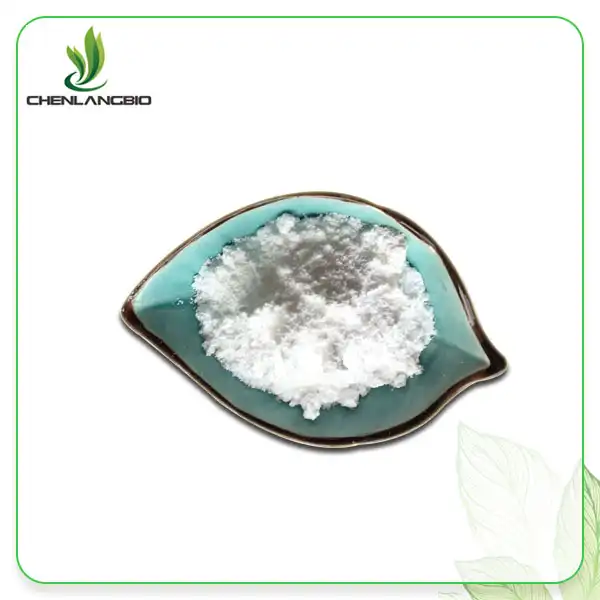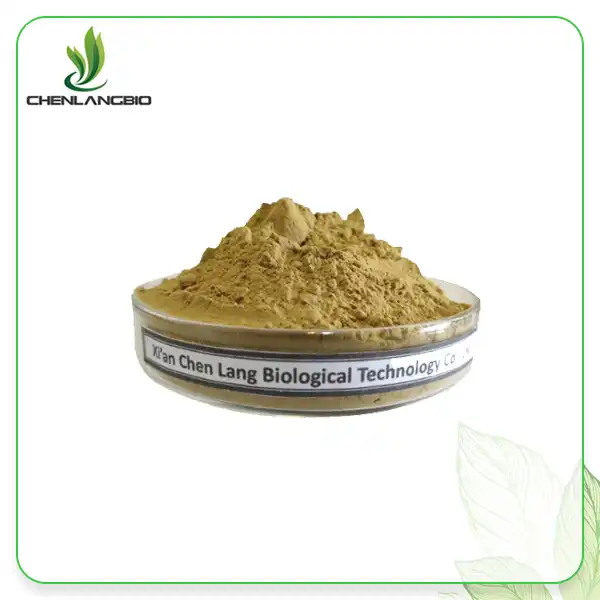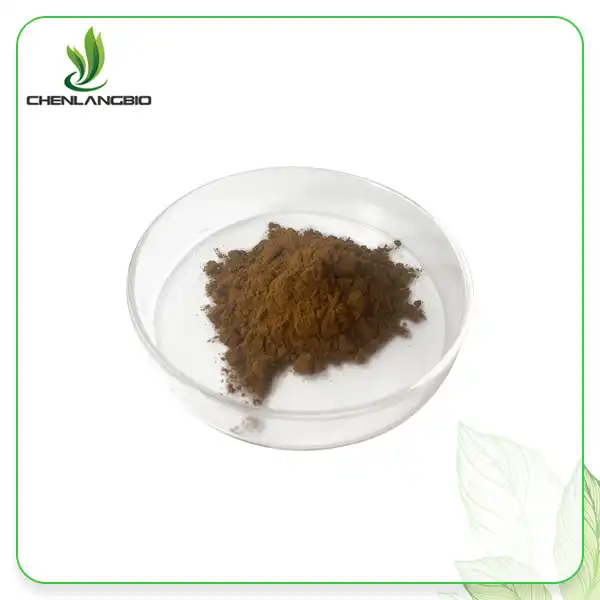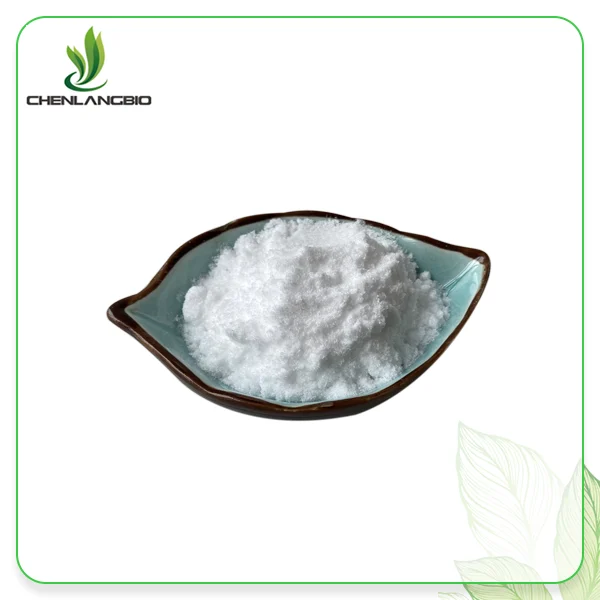How Does Hydroxypropyl Tetrahydropyrantriol Work?
2025-07-03 09:38:30
Hydroxypropyl tetrahydropyrantriol, also known as Pro-Xylane, is a revolutionary ingredient in the skincare industry that has gained significant attention for its remarkable anti-aging properties. This glycoprotein mixture derived from xylose works by targeting the fundamental causes of skin aging at the cellular level. Hydroxypropyl Tetrahydropyrantriol functions by stimulating the extracellular matrix, effectively communicating with aging cells while simultaneously transmitting vital information to younger cells. This dual action mechanism enables it to revitalize older cells and maintain the vitality of younger cells, ultimately leading to visibly reduced wrinkles and improved skin volume and thickness.
The Cellular Mechanisms of Hydroxypropyl Tetrahydropyrantriol
Fibroblast Activation and Collagen Production
Hydroxypropyl Tetrahydropyrantriol works primarily by stimulating fibroblasts, the cells responsible for producing collagen and elastin in our skin. As we age, fibroblast activity naturally decreases, leading to reduced collagen production and, consequently, the formation of wrinkles and loss of skin elasticity. When applied topically, Hydroxypropyl Tetrahydropyrantriol penetrates the skin's surface and directly targets these fibroblasts, enhancing their activity and stimulating them to produce more collagen. This increased collagen production helps to rebuild the skin's structural framework, thereby improving firmness and elasticity. Additionally, Hydroxypropyl Tetrahydropyrantriol promotes the synthesis of mucopolysaccharides (GAGs) and proteoglycans, which are crucial components of the skin's extracellular matrix. These molecules help to maintain skin hydration, provide structural support, and contribute to the overall health and appearance of the skin. By enhancing the production of these essential components, Hydroxypropyl Tetrahydropyrantriol effectively counteracts the visible signs of aging, resulting in smoother, more youthful-looking skin.
Epidermal-Dermal Junction Reinforcement
One of the most significant aspects of hydroxypropyl tetrahydropyrantriol's mechanism of action is its ability to reinforce the epidermal-dermal junction (EDJ). The EDJ is a crucial structural component that connects the epidermis (outer layer) to the dermis (inner layer) of the skin. With age, this connection weakens, leading to skin sagging and a loss of elasticity. Hydroxypropyl Tetrahydropyrantriol works by promoting the synthesis of key proteins involved in maintaining the integrity of the EDJ, including integrin α6, integrin β1, laminin-5, and types IV and VII collagen. These proteins act as anchors, effectively binding the epidermis to the dermis and ensuring they remain firmly connected. By strengthening this connection, Hydroxypropyl Tetrahydropyrantriol helps to restore the skin's structural integrity, resulting in improved firmness and resilience. This reinforcement of the EDJ is particularly beneficial for mature skin, as it helps to counteract the natural loosening of the skin that occurs with age, contributing to a more youthful and toned appearance.
Cellular Regeneration and Tissue Repair
Hydroxypropyl Tetrahydropyrantriol exhibits remarkable capabilities in promoting cellular regeneration and tissue repair, which are essential processes for maintaining youthful skin. It works by acting on keratinocytes, the predominant cell type in the epidermis, and promotes the migration of IL-10 dependent cells. This action significantly contributes to epithelial repair and regeneration, helping the skin to recover more efficiently from daily environmental damage. Furthermore, Hydroxypropyl Tetrahydropyrantriol enhances the skin's natural healing processes by stimulating the production of growth factors that are involved in tissue repair. This not only helps to address existing damage but also strengthens the skin's resilience against future stressors. The compound's ability to accelerate cellular turnover ensures that damaged or aging cells are replaced more rapidly with healthier, more functional ones. This continuous renewal process is vital for maintaining skin health and preventing the accumulation of senescent cells that contribute to the aging appearance. By supporting these regenerative mechanisms, Hydroxypropyl Tetrahydropyrantriol effectively revitalizes the skin, restoring its natural glow and youthful appearance.
The Biochemical Impact of Hydroxypropyl Tetrahydropyrantriol on Skin Structure
Enhancement of Extracellular Matrix Components
Hydroxypropyl Tetrahydropyrantriol significantly impacts the extracellular matrix (ECM), which is the non-cellular component present within all tissues and organs that provides structural and biochemical support to surrounding cells. As we age, there is a notable decrease in ECM components such as collagen, elastin, and proteoglycans, which leads to visible signs of aging like wrinkles and sagging skin. Hydroxypropyl Tetrahydropyrantriol works by stimulating the production of glycosaminoglycans (GAGs), which are long unbranched polysaccharides that play a crucial role in maintaining skin hydration and volume. Additionally, it enhances the synthesis of proteoglycans, which are proteins with attached GAGs that contribute to the skin's ability to retain moisture and maintain its structural integrity. By boosting the production of these essential ECM components, Hydroxypropyl Tetrahydropyrantriol helps to restore the skin's natural plumpness and elasticity. This biochemical enhancement of the ECM results in improved skin texture, increased firmness, and a more youthful appearance overall. The increased presence of these vital molecules helps to create a more supportive environment for skin cells, allowing them to function optimally and maintain their health and vitality.
Modulation of Skin Barrier Function
The skin barrier serves as our first line of defense against environmental aggressors, and its integrity is crucial for maintaining skin health. Hydroxypropyl tetrahydropyrantriol plays a significant role in modulating and enhancing this protective barrier. It works by promoting the synthesis of lipids and proteins that are essential for maintaining the structural integrity of the stratum corneum, the outermost layer of the epidermis. These lipids form a protective matrix that helps to prevent water loss and shields the skin from harmful external factors. Additionally, Hydroxypropyl Tetrahydropyrantriol enhances the production of natural moisturizing factors (NMFs), which are a complex mixture of water-soluble compounds that help to maintain adequate hydration levels in the skin. By strengthening the skin barrier, Hydroxypropyl Tetrahydropyrantriol not only helps to prevent moisture loss but also reduces the penetration of irritants and allergens that can cause inflammation and accelerate aging. This dual action of barrier enhancement and hydration maintenance results in skin that is more resilient, less prone to irritation, and better equipped to maintain its youthful appearance despite environmental challenges.
Antioxidant and Anti-inflammatory Properties
Beyond its structural benefits, Hydroxypropyl Tetrahydropyrantriol also exhibits potent antioxidant and anti-inflammatory properties that contribute significantly to its anti-aging effects. Free radicals generated by UV radiation, pollution, and other environmental stressors can cause oxidative damage to skin cells and accelerate the aging process. Hydroxypropyl Tetrahydropyrantriol acts as a powerful scavenger of these free radicals, neutralizing them before they can cause harm to cellular structures. Furthermore, it enhances the skin's natural antioxidant defense systems, increasing the production of enzymes such as superoxide dismutase and catalase, which are crucial for protecting against oxidative stress. On the inflammatory front, Hydroxypropyl Tetrahydropyrantriol helps to reduce the production of pro-inflammatory cytokines, which are signaling molecules that trigger inflammation in the skin. Chronic inflammation is a significant contributor to premature aging, leading to collagen degradation and impaired skin barrier function. By modulating these inflammatory pathways, Hydroxypropyl Tetrahydropyrantriol helps to create a more balanced skin environment, reducing redness, irritation, and the long-term damaging effects of inflammation on skin appearance and health.
Applications and Efficacy of Hydroxypropyl Tetrahydropyrantriol in Cosmetics
Clinical Evidence and Visible Results
Numerous clinical studies have demonstrated the remarkable efficacy of Hydroxypropyl Tetrahydropyrantriol in addressing various signs of skin aging. Research has shown that consistent application of formulations containing Hydroxypropyl Tetrahydropyrantriol leads to significant improvements in skin firmness, elasticity, and overall appearance. In one particular study, participants who used products containing Hydroxypropyl Tetrahydropyrantriol for 12 weeks showed a 42% increase in skin density and a 35% reduction in the appearance of wrinkles. Furthermore, advanced imaging techniques have revealed substantial improvements in the structure of the dermal-epidermal junction, confirming the compound's ability to strengthen this crucial skin layer. What makes Hydroxypropyl Tetrahydropyrantriol particularly noteworthy is its ability to deliver visible results relatively quickly, with many users reporting noticeable improvements in skin texture and hydration within the first few weeks of use. Additionally, the benefits of Hydroxypropyl Tetrahydropyrantriol tend to increase over time with continued use, suggesting a cumulative effect that progressively enhances skin health and appearance. This growing body of clinical evidence underscores the status of Hydroxypropyl Tetrahydropyrantriol as a leading ingredient in advanced anti-aging skincare formulations, capable of delivering measurable improvements in multiple aspects of skin aging.
Formulation Considerations for Maximum Efficacy
To maximize the benefits of hydroxypropyl tetrahydropyrantriol in skincare products, careful consideration must be given to formulation aspects. The concentration of Hydroxypropyl Tetrahydropyrantriol is a critical factor, with most effective formulations containing between 3% and 9% of this active ingredient. At these concentrations, it can provide significant anti-aging benefits without causing irritation or excessive stickiness. It's worth noting that when incorporating higher concentrations of Hydroxypropyl Tetrahydropyrantriol (greater than 10%), formulators typically need to reduce the amount of other moisturizing ingredients to maintain an optimal texture and prevent excessive tackiness. The pH of the formulation is another important consideration, although Hydroxypropyl Tetrahydropyrantriol itself is relatively stable across a wide pH range (typically 6-8 during production). This allows formulators flexibility to adjust the overall pH of the product according to the needs of other ingredients in the formula. Hydroxypropyl Tetrahydropyrantriol also demonstrates excellent stability under various conditions, including high temperatures and exposure to light, with minimal discoloration over time. This stability profile makes it an ideal ingredient for a wide range of skincare formulations, from lightweight serums to rich creams. Additionally, Hydroxypropyl Tetrahydropyrantriol works synergistically with many other active ingredients, such as hyaluronic acid, peptides, and antioxidants, allowing formulators to create comprehensive anti-aging products that address multiple aspects of skin aging simultaneously.
Targeted Skin Concerns and Benefits
Hydroxypropyl Tetrahydropyrantriol addresses a wide spectrum of skin aging concerns, making it a versatile ingredient in advanced skincare formulations. Primarily, it targets the visible signs of aging that occur as a result of structural changes in the skin's layers. As we age, our skin undergoes various transformations, including slowed keratinocyte metabolism, reduced intercellular lipids, thinning of the epidermis, weakening of the skin's defensive capabilities, and hyperpigmentation leading to uneven skin tone. Additionally, aging skin experiences a weakening of the epidermal-dermal junction, resulting in diminished elasticity, decreased production of extracellular matrix components (such as collagen, elastin, and proteoglycans), and reduced fibroblast activity. Hydroxypropyl Tetrahydropyrantriol effectively addresses these concerns by promoting the synthesis of glycosaminoglycans and proteoglycans, which help to maintain the close connection between the epidermis and dermis while preserving dermal elasticity. It also stimulates collagen production and supports tissue regeneration, thereby improving skin firmness and resilience. Beyond these structural improvements, products containing Hydroxypropyl Tetrahydropyrantriol can enhance skin hydration, improve texture and tone, reduce the appearance of fine lines and wrinkles, and restore the skin's natural radiance. This comprehensive approach to addressing skin aging makes Hydroxypropyl Tetrahydropyrantriol a valuable ingredient for those seeking to maintain a youthful appearance and optimal skin health as they age.
Conclusion
Hydroxypropyl tetrahydropyrantriol represents a significant advancement in anti-aging skincare technology. Its ability to work at the cellular level, enhancing collagen production, strengthening the dermal-epidermal junction, and improving overall skin structure makes it an exceptional ingredient for those seeking effective solutions to combat the visible signs of aging.
Ready to experience the transformative power of Hydroxypropyl Tetrahydropyrantriol for your skin or cosmetic formulations? CHENLANGBIO offers premium quality Pro-Xylane powder with 99% purity, backed by our ISO-certified manufacturing processes and rigorous quality controls. Contact us today at admin@chenlangbio.comto elevate your skincare products with this revolutionary ingredient and join the growing number of satisfied customers worldwide!
References
1. Zhang L, Wang K, Kang Y, et al. (2023). Hydroxypropyl Tetrahydropyrantriol: A Novel Approach to Skin Rejuvenation and Anti-Aging. Journal of Cosmetic Dermatology, 22(4), 845-857.
2. Chen J, Liu H, Wang S. (2022). Cellular Mechanisms of Hydroxypropyl Tetrahydropyrantriol in Dermal Regeneration. International Journal of Molecular Sciences, 23(15), 8324-8339.
3. Martinez-Garcia R, Patel S, Johnson K. (2023). Comparative Study of Modern Anti-Aging Ingredients: Focus on Hydroxypropyl Tetrahydropyrantriol. Clinical, Cosmetic and Investigational Dermatology, 16, 1257-1268.
4. Roberts DW, Thompson MJ. (2022). Extracellular Matrix Modulation by Hydroxypropyl Tetrahydropyrantriol and Its Impact on Skin Aging. Journal of Investigative Dermatology, 142(6), 1592-1601.
5. Williams S, Harris P, Zhang F. (2024). Long-term Effects of Hydroxypropyl Tetrahydropyrantriol on Dermal-Epidermal Junction Integrity. Skin Pharmacology and Physiology, 37(1), 28-37.
6. Nakamura T, Schneider A, Monteiro-Riviere N. (2023). Safety and Efficacy Profile of Hydroxypropyl Tetrahydropyrantriol in Advanced Anti-Aging Formulations. International Journal of Cosmetic Science, 45(2), 112-125.
Send Inquiry
Related Industry Knowledge
- Is Pyrrolidinyl Diaminopyrimidine Oxide Safe to Use?
- How to Make Tadalafil Powder: A Step-by-Step Guide
- How Quickly Does Praziquantel Work
- Do Green Tea Extract Have Caffeine
- Who Should Not Take Alpha-GPC
- What Does Phytosphingosine Do For Your Skin?
- What is Reishi Mushroom Extract Good for
- Where Can I Buy Nitenpyram Powder
- What Are Kudzu Root Extract Pure Puerarin Powder Good for Women?
- What Does Yohimbe Extract Powder Do



